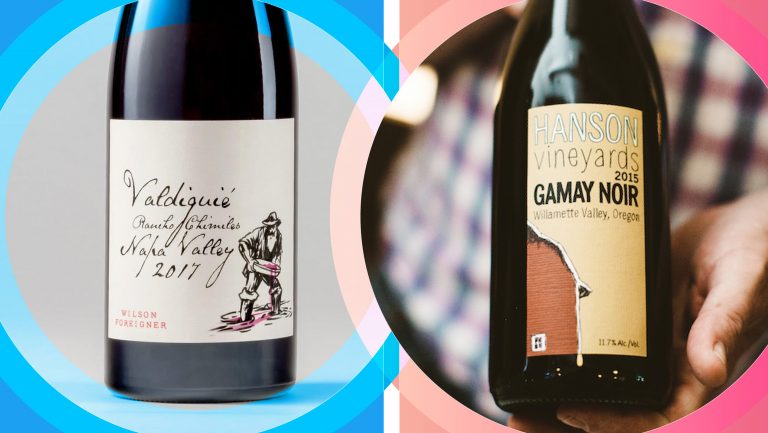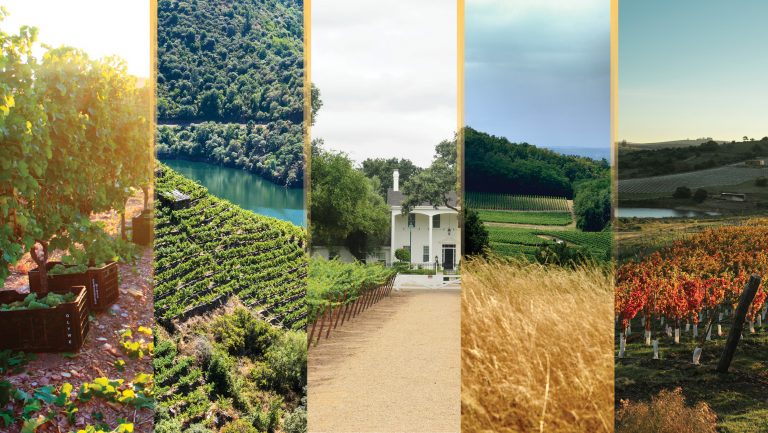In an industry teeming with Goliaths, we’re all looking for the next David—all the more so because those of us who work in the wine trade are struggling to support our Montrâchet tastes with Mâcon pocketbooks.
In California and Oregon, a couple of scrappy underdog varieties have been the darlings of the industry recently. North of the vinous Mason-Dixon line is Gamay, which thrives in Oregon, and to the south is Valdiguié, which is enjoying a renaissance in California.
These two “it” grapes have a lot in common—vinification techniques and aromatics, among other things—as well as a history of quirky coincidences, making them a bit like the Alexander Hamilton and Aaron Burr of the wine world. Clearly, a smackdown is in order.

Don’t miss the latest drinks industry news and insights. Sign up for our award-winning newsletters and get insider intel, resources, and trends delivered to your inbox every week.
Gamay
What It Is
Gamay makes a pale purple wine with aromatics of strawberry, anise, and fresh herbs, and focused flavors of tangy cranberry, strawberries, and earth that can be accented by white pepper notes. In Oregon, where it thrives, it’s often the last thing to come in at harvest, typically at a mere 21 to 23 Brix, with vivacious acidity. It lends itself to a variety of styles, from a classic Pinot Noir–ish red to a 100 percent whole-cluster carbonic nouveau to rosé to pét-nat to bottle-fermented bubbly.
Who’s Pouring It
Master Sommelier Pascaline Lepeltier, a managing partner at Racines in New York City. Jacob Gaumer, the wine director at Freek’s Mill in Brooklyn. Adam Robins, the sommelier and assistant GM at State Bird Provisions in San Francisco. Joe Briand, the wine director at Bacchanal Wine and The Elysian Bar in New Orleans.
Why It’s an Underdog
Sometimes called the poor man’s Pinot, the variety gets its name from the village of Gamay in the southern Côte de Beaune. But the grape was banished from Burgundy in 1395, when Duke Philip the Bold declared it “a very bad and disloyal variety,” “full of significant and horrible bitterness,” causing “ruin and desolation” in the vineyards. The residents of Beaujolais didn’t get the memo, however, and they answered to the Duke of Bourbon, anyway. Even today, Burgundians are appalled that the vintners of northern Beaujolais can bottle their wines as Bourgogne Gamay Rouge, although a few stubborn holdouts in the Côte d’Or bottle Gamay under the title Bourgogne Passetoutgrains.

Why It’s Hot Now
Gamay’s reputation was first rehabilitated in the 1980s, when the so-called Beaujolais Gang of Four (Guy Breton, Jean Foillard, Marcel Lapierre, and Jean-Paul Thévenet) began pushing organic farming in the vineyard and an anti-Nouveau, natural winemaking agenda in the cellar. Fast-forward to today and the grape has become a symbol of both irreverence and authenticity in winemaking. Case in point I Love Gamay, now in its third year, brings a who’s-who list of indie producers and importers together in Portland. This year’s event is May 3–6, to be held at The Nightwood, Cooper’s Hall, and WEST. Among the buzzy Willamette Valley vintners that will be featured are Bow & Arrow, Evening Land, Love & Squalor, Martin Woods, and Minimus.
Who’s Vinifying It
There are approximately 25 Oregon winemakers working with Gamay. Tom Monroe and Kate Norris—the co-owners of the Division Winemaking Company and SE Wine Collective, both in Portland, and cofounders of the I Love Gamay festival—are so obsessed with the grape that they studied in Beaujolais and apprenticed in the Loire. Down in California, Steve Edmunds, the proprietor and winemaker at Edmunds St. John in Berkeley, got turned on to Cru Beaujolais in the mid-1970s by “the loveliness of the perfume, the silken texture, the sheer deliciousness,” he says, and now vinifies Gamay grown at high elevation in the El Dorado County subappellation of the Sierra Foothills AVA.
Why It Rocks in the Vineyard
Gamay offers up prolific fruit, is resistant to mold and rot, and is easy to work with. “I have harvested it in August and in November at a nearly identical, stable pH of about 3.25,” says Doug Tunnell, the dean of Oregon Gamay producers and the owner and winemaker at Brick House in the Willamette Valley’s Ribbon Ridge subappellation. The variety requires very little canopy management and adapts to a wide variety of sites and soils, Tunnell adds; in addition, unlike “floppy” Pinot Noir and Chardonnay, it takes well to trellising. Adds Edmunds: “The grapes seem to ripen nicely at pretty low pH levels, which really gives the wines a tremendous amount of energy.”
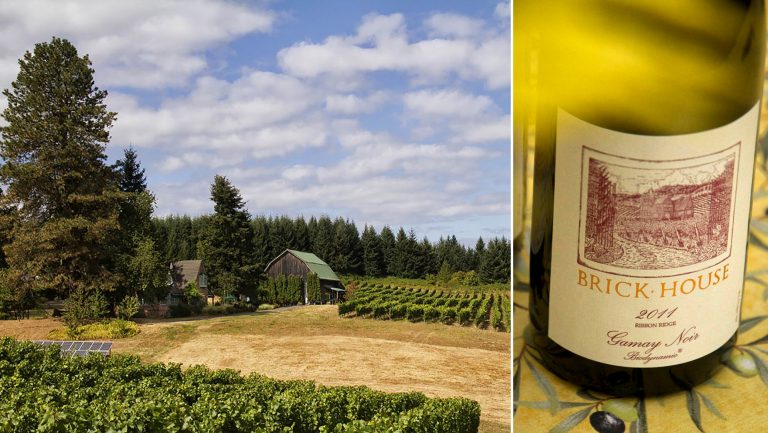
Why It Rocks in the Glass
“Gamay makes a value-driven wine that punches above its weight,” says State Bird Provisions’ Robins, who adds that it’s an affordable alternative to Pinot Noir, whether from Burgundy or the U.S. “It’s lighter- to medium-bodied and very aromatic, with nice acidity, which is very palate cleansing. So it’s not going to overpower many dishes.”
Why It Should Win the Smackdown
“Gamay has a more storied history and much more presence in the market,” says Robins. “We are just starting to see Valdiguié hitting the [U.S.] market … We just don’t have enough of a snapshot of the wine to see its full potential yet.” Adds Joe Briand, of Bacchanal Wine and The Elysian Bar, “This is like one of those heavyweight fights that’s all hype and then when it starts, the champ delivers a knockout in the first round. Gamay is the champ. Gamay is Ric Flair: the stylin’, profilin’, limousine-riding, jet-flying, kiss-stealing, wheeling-and-dealing son of a gun. Valdigué is “Hacksaw” Jim Duggan, an entertaining underdog but not somebody who could carry the main event at WrestleMania.”
Valdiguié
What It Is
Valdiguié makes a dark-purple wine with effusive floral aromatics and flavors of red cherry, blackberry, and pomegranate accented by black pepper and clove notes. Its big, plump, dark berries ripen late and maintain their acidity; even in sunny California, it’s not uncommon to harvest at sugar levels as low as 21 or 22 Brix as late as November. It lends itself to a variety of styles, from 100 percent whole-cluster carbonic nouveau to rosé to pét-nat to a fresh, simple red. And if you’re feeling déjà vu–ish right now, yes, Valdiguié has a lot in common with Gamay.
Who’s Pouring It
Richard Hargreave, the director of food, beverage, and special projects at Majordomo in Los Angeles. Christopher Struck, a sommelier a Union Square Cafe in New York City. Eric Railsback, the director of operations at Verve Wine in San Francisco and a partner in Lieu Dit winery in Lompoc, California. Ryan Stetins and Matt Stamp, cofounders of Compline in Napa, California. Axel Kjellman, the wine director at House of Tricks, in Tempe, Arizona.
Why It’s an Underdog
The grape was mischaracterized in California as “Napa Gamay” for decades—a mistake that wasn’t corrected until 1980, when the ampelographer Pierre Galet identified it as Valdiguié, also known as Gros Auxerrois in France’s Languedoc (where it is hopelessly irrelevant). In a double insult to the vignerons of Beaujolais, Californians continued to bottle Valdiguié as “Gamay Beaujolais” until 2009. So … one can see why a Gamay lover might have a bone to pick with Valdiguié.
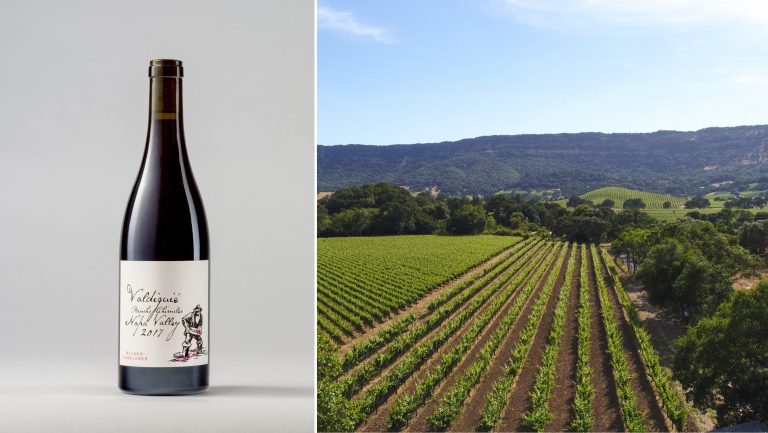
Why It’s Hot Now
Influential critics like Esther Mobley and Jon Bonné have been pounding their keyboards about Valdiguié for years, and the variety is a favorite of social media influencer Marissa Ross.
Who’s Vinifying It
Valdiguié god Michael Cruse, the winemaker and proprietor at Cruse Wine Co., who releases multiple interpretations of the grape annually, estimates that a total of 15 California winemakers are working with the grape. Chris Brockway, the founder and winemaker of Broc Cellars in Berkeley, was actually searching for Gamay in 2011 when he found “Napa Gamay” vines dating to 1950 at Wirth Ranch in the Solano County Green Valley AVA. He hasn’t looked back since—today, Brockway vinifies a classic structured Valdiguié red, as well as a rosé, a sparkling rosé, a vin de soif–style thirst quencher, and a fortified sweet wine, all from this rare grape. David Wilson was inspired to launch his Napa label Wilson Foreigner after tasting a bottling his parents had home-vinified from a small block of old-vine Valdiguié at his family’s ranch. Other producers include Lumia in Healdsburg, Jolie-Laide in Sebastopol, Folk Machine in Santa Rosa, Thacher in Paso Robles, and Wind Gap in the Sonoma Valley.
Why It Rocks in the Vineyard
“Valdiguié can handle the heat. It can handle hot days and not have its sugars spike and acids drop,” says Brockway. “I like it best head-pruned where it can throw itself a nice canopy for protection and not be susceptible to rot.” Wilson adds that Valdiguié yields well and is disease resistant.
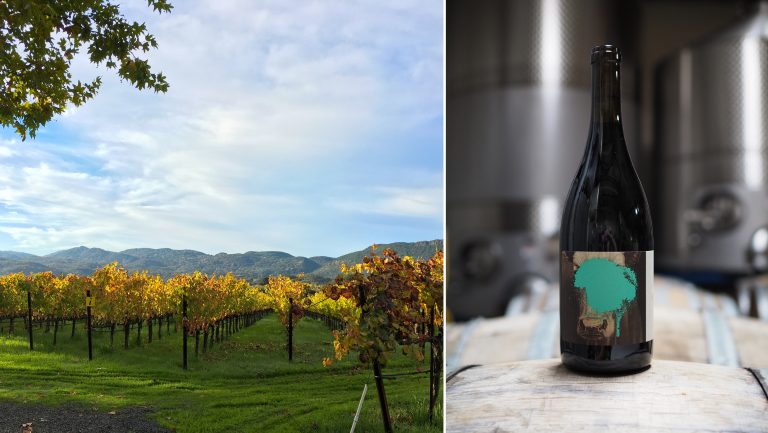
Why It Rocks in the Glass
California somms keep Valdiguié in their spring and summer rotations, when, slightly chilled, it makes a refreshing pairing with a charcuterie plate. “I think it’s fantastic,” says Kjellman of House of Tricks. “It’s a very food-friendly wine, and it drinks great right out of the bottle. That makes it a great BTG.” For those looking for a value glass pour, J. Lohr’s Wildflower Valdiguié is a screaming deal, selling for just $10 a bottle retail.
Why It Should Win the Smackdown
“I think it should win [the] smackdown because we need a Gamay of the USA,” says Kjellman. “Something easy drinking, that’s great right after bottling, and doesn’t hurt the wallet.” Adds Eric Railsback of Verve Wine, “The wines are so fresh, vibrant, and expressive, with a touch more hedonistic fruit compared to Gamay.”
Verdict
Gamay wins the availability and popularity contest, hands down. And it’s a heck of a lot easier to spell. Only in terms of rarity and mystique is Valdiguié tough to beat, says Briand of NOLA’s Bacchanal and The Elysian Bar. “Gamay’s biggest problem,” he says, “is maybe a backlash at how popular it’s gotten. Like when a band you love becomes popular and everyone starts listening, there’s a backlash; somms [are] like, ‘I used to like Gamay; you know—the old stuff.’” He goes on to say that Gamay is the “OG of natural wine,” adding that it’s a wine that can hold up to any need. “Burgundy prices got you wondering what you can afford to drink?” he asks. “Gamay’s got you. Trying to impress with a magnum for Thanksgiving? Côte de Brouilly to the rescue. Trying to stump your blind-tasting group? Maybe then you call Valdigué.”

Dispatch
Sign up for our award-winning newsletter
Don’t miss the latest drinks industry news and insights—delivered to your inbox every week.
Katherine Cole is the author of four books on wine, including Rosé All Day. She is also the executive producer and host of The Four Top, a James Beard Award–winning food-and-beverage podcast on NPR One. She is currently working on a fifth book, Sparkling Wine Anytime (Abrams), to be published in Fall 2020.

